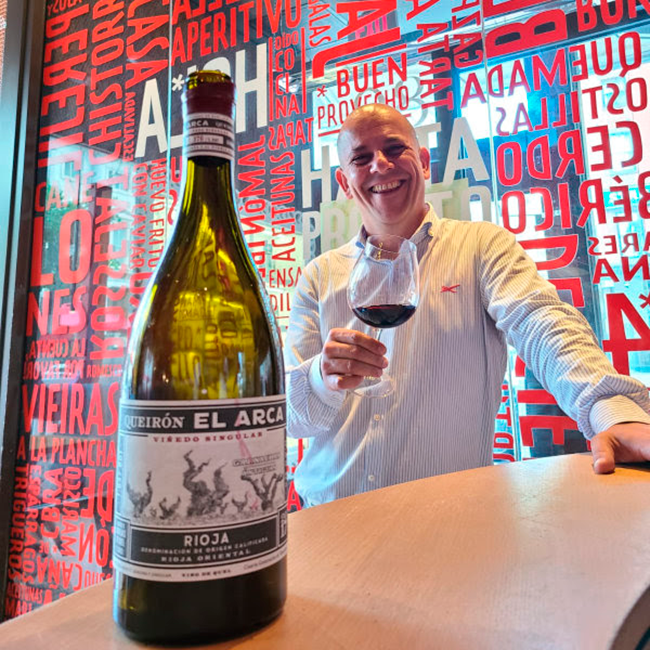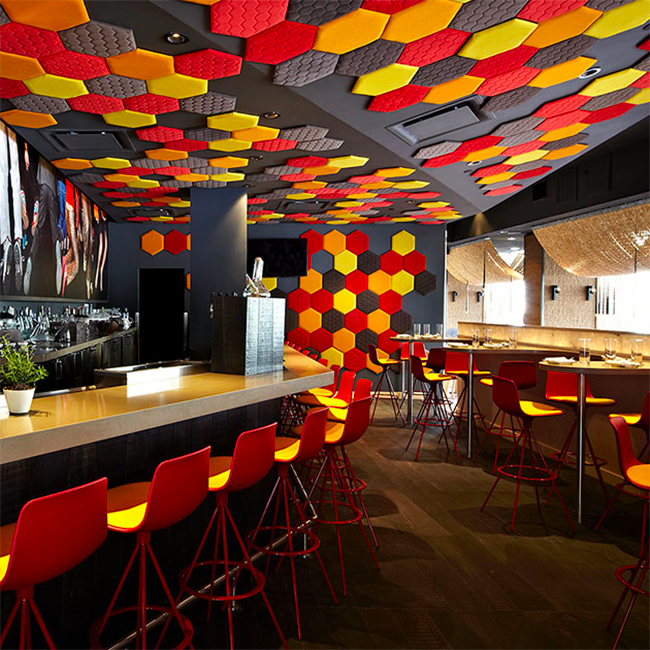.png.transform/rendition-xs/image_image%20(1).png)
Interview with Jordi Paronella, Head Sommelier of José Andrés’s Jaleo Restaurant
In this blog post, Wines from Spain speaks with Jordi Paronella, Head Sommelier of José Andrés’s Jaleo Restaurant, about changes in the hospitality industry, exciting new developments in Spanish wine, and the perfect pairing for paella.

Jordi you’re a real tastemaker and expert when it comes to Spanish wine. Based in D.C., you’re the Head Sommelier of José Andrés’s Jaleo restaurants. How did you get your start in the wine world, and what made you fall in love with Spanish wine in particular?
My first job was 30 years ago, in Menorca. I worked in a hotel, working behind a bar in front of a pool. I realized that I love being in contact with the guests, and the hospitality business. Back in 2000-2002 I finalized my sommelier studies in Barcelona, and then I took my WSET Level 3 in Washington two years ago. Spain is unique. We have the biggest wine production in the world, with plenty of local varieties, different climates, soils... and still today it’s possible to find 90-200 year old vines. Not to mention that I think we have the best quality-price wines in the world.
Many things are changing right now in the world of wine and hospitality. How are you and Jaleo adapting to these new challenges, and what do you think the future of restaurants might look like?
I’m fortunate to work for José Andrés and Think Food Group. We take the safety of our guests and employees very seriously. We follow all the requirements—taking employees’ temperatures, wearing masks and gloves, practicing proper sanitation, spacing out our tables, and more. Our guests feel so comfortable in our restaurants, even with everything going on. It may be weird working with a mask and gloves, but you get used to it. Maybe the only positive thing in this pandemic is that we’re allowed to have a retail license in almost all the restaurants, and I see a lot of guests buying a bottle to go. Unfortunately, many restaurants will close, and the ones that survive will need to look out for the safety and health of their employees and guests, and of course continuing to offer the best hospitality, service, and food. We will also see a huge increase of delivery pick up and to go. We’ve seen it in our restaurants already—around 15% of our revenue comes from online channels.
With beverage alcohol laws being relaxed in many states due to the pandemic, wine delivery and online ordering are both seeing a bit of a renaissance, and retail sales have been strong. Are we seeing new patterns in wine consumer behavior that are here to stay? How do sommeliers fit into this “new normal”?

Well, it’s hard to answer. We’re lucky retail wine shops are considered essential business and that we can all have some good Spanish wine during this bad time. I hope wine consumption will continue to rise, and I see guests coming back to Jaleo to try new wines. The new normal may be seeing fewer guests and tables, but we’re still in the restaurants selling wines and sharing the amazing foods of Spain. We’ve created a lot of new training material for our staff, and online tastings have increased a lot. In general, the wine business has adapted really well to the new digital landscape—so we’ve all felt more connected and have learned a lot together
Are there any trends specific to Spanish wine that you see in restaurants and retail that surprise or excite you? What do diners and consumers seem to be most curious about trying?
A young generation, recuperating local or forgotten grapes, working with low intervention in the vineyard and as well in the winemaking process, using different vessels—like concrete, glass, used barrels, clay, amphora—to make wines that are more food friendly. I see traditional guests ordering wines or varietals they know from Spain, like Albariño or Verdejo, Rioja or Ribera del Duero. Then open-minded guests, willing to taste new grapes like Godello, Mencía, Garnacha, or regions like Sherry.
What regions or DOs in Spain have you feeling most inspired at the moment? Any cool recommendations for wine lovers to turn to for the next big vinous discovery?

I think wines from Spain are in the best moment they ever have been. For me Galicia is the new Burgundy in Spain. Canary Islands wines are unique, the still whites wines from Jerez are very exciting, and also lighter and more elegant red Priorats are terrific. Xarel-lo and Sumoll in Penedes are ripe for discovery, along with reds from Asturias and impeccable Garnachas from Madrid, Navarra, Aragon, and Rioja…the list never ends!
What are your go-to Spanish wine pairings, both for guests at Jaleo, and for yourself at home? Just what is it about Spanish wine that makes it so perfectly complementary for food, and vice versa?
I try to always have a bottle of Manzanilla Sherry at home, which is ideal as an appetizer or even while I’m cooking, and is delicious paired with all kinds of seafood cans, olives, jamon, anchovies. Bubbles don’t last at home, as Cava is just too good to say no to, and does perfectly with my Paella Sundays at home—I’m always telling my staff that there’s no better wine than Cava to pair with Paella. Spain has a huge diversity of wines that can complement food, and a new trend of lighter wines are perfect for just that.
You’re stranded on a desert island, and you have only one case of Spanish wine to keep you company (and to pair with whatever you can find to eat). What would you choose?
Is it possible to mix a case? I’d say: a mix of a Cava, Manzanilla Sherry, Txakoli, aged Albariño, and Mencía. But if I had to pick just one, I’d go with the bubbles.

